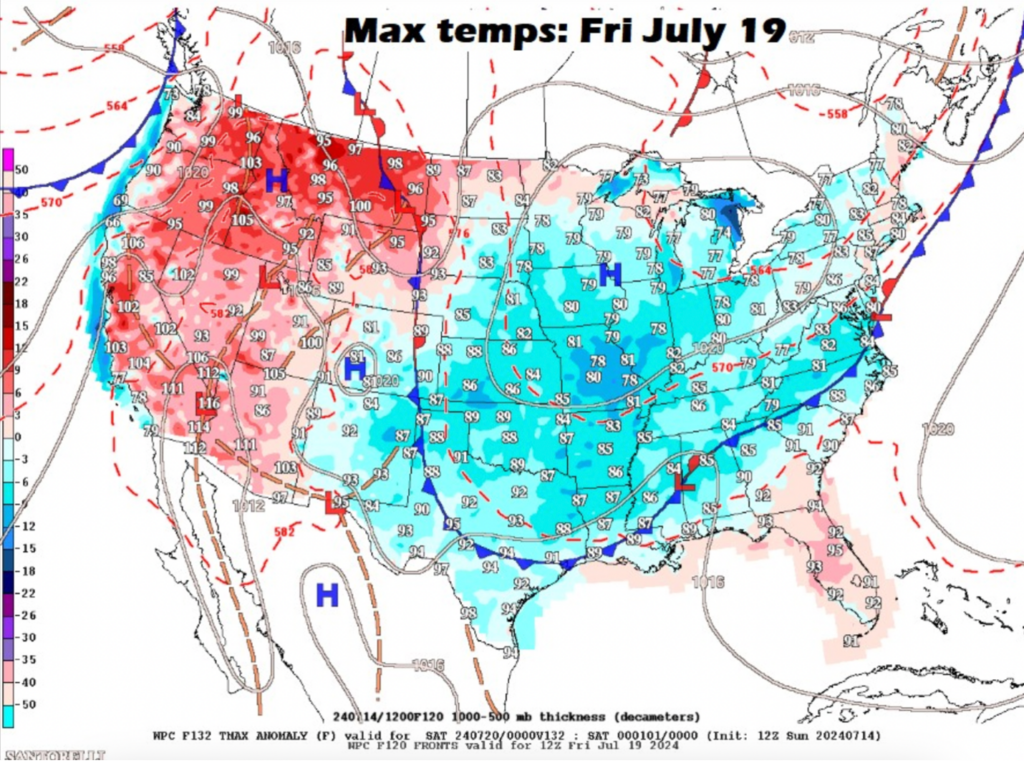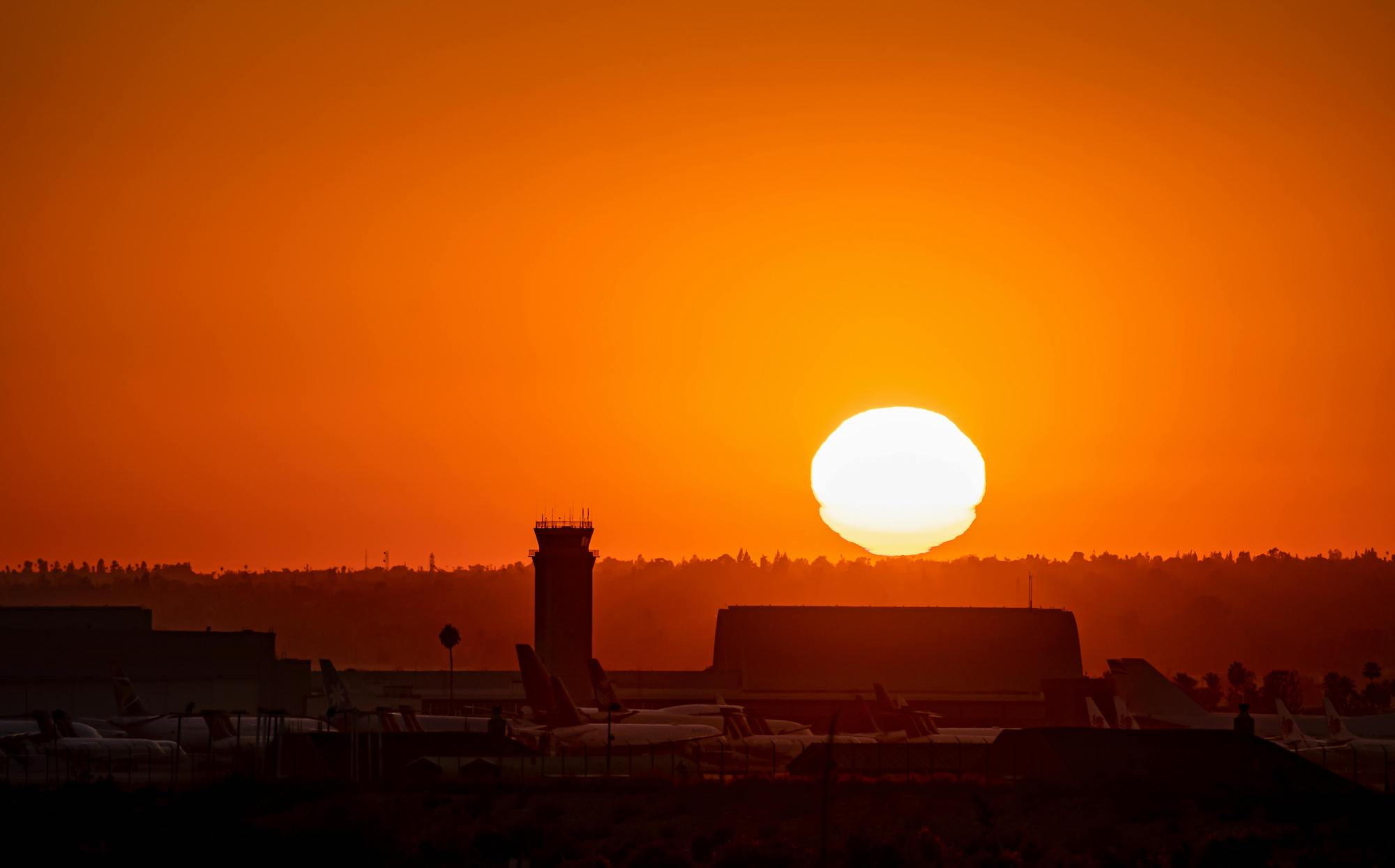Speaking from the Oval Office in the wake of Saturday’s attempted assassination of Donald Trump, a cogent Joe Biden made the case that violence has no legitimate place in America.
Addressing “the need to lower the temperature in our politics,” he observed that the political arena “has gotten so heated. . . [i]t’s time to cool down. We all have a responsibility to do that.”
The President was certainly correct about that. The horrendous apparent act of political terrorism should sober up the nation. But, as President Biden also surely understands, it is not only our political environment that has become overheated.
To take but one instance, the daytime high in Las Vegas exceeded 112oF every day from the 3rd to the 12th of this month – before cooling last weekend to 104oF. Moreover, daily highs exceeding 100oF were reached in vast stretches of the west, including in California, Oregon, Washington, Idaho, Nevada, Utah, Arizona, New Mexico, and Texas. Data has been depicted by the National Oceanic and Atmospheric Administration (NOAA) and other agencies, and we reprint one of them here.

At this writing, “excessive heat warnings” have been issued “for about 36 million people, or about 10% of the nation’s population.” Dozens of locations in the West and Pacific Northwest have recently tied or broken previous heat records. The extreme heat risk has now “expand[ed] in coverage over portions of the central and eastern U.S.,” and excessive heat warnings have been issued for New York City and Washington D.C., among other population centers. Fortunately for some of these major metropolitan areas in the east, cooler weather is now on its way. According to NOAA, “[a] large dome of cool air from Canada” will bring “welcome relief across much of the eastern two-thirds of the country.” Regrettably, however, it also appears that the Pacific Northwest “will not benefit from this cool air mass as triple-digit high temperatures are forecast to persist into late week.” And indeed, federal agencies anticipate persistently high temperatures over the western states from Mexico to Canada, as indicated in their mapped forecast for Friday.

For California, the deadly combination of significant early season rain and ensuing high heat have worked to dramatically heighten the risk of wildfire. As the climate and weather analyst Daniel Swain reported late last month, in Weather West, “’fine fuel “loading’ is higher than average this season across most of California following two wet and comparatively mild seasons in 2022 and 2023.” Compounding that fire risk, “nearly all of California may have a period of record “warm minimum” (i.e., record warm overnight “low” temperatures)–even at the coast and in SoCal.”
Some 3,873 wildfires, and counting, have occurred already this year in California,
burning more than 230,000 acres.
Some 3,873 wildfires, and counting, have occurred already this year in California, burning more than 230,000 acres, according to Cal Fire. Several of these are large, or could become so, including the Tejon Ranch fire in Kern County. All today, according to a recent report, “more than 30,000 acres” in Kern and San Luis Obispo Counties has already burned. Worse, the Lake fire – just northwest of Santa Barbara – overnight ballooned to 39,000 acres burned, and that fire is just 38% contained. Earlier this month the Thompson fire in Northern California forced the evacuation of 26,000 persons near Oroville, before officials determined that the Oroville Dam was secure. In just the last day, the Shelly fire – in the Klamath range just to the west of Weed – increased by 15% to 15,000 acres burned; at 5% containment, there is no clear end in sight.
On top of high heat, recent drying, and high winds, planners really need to factor-in cultural traditions that in certain contexts have turned increasingly lethal. Thus, “[o]n July 4 . . . 232 fires [ignited] across a blistering hot California.” As of this writing, according to a current analysis “there are 32 large or notable new fires burning across the Western United States, fueled by hot, dry and windy conditions.”
Record-breaking over-night temperatures are of especial concern, since they provide personnel trying to contain or fight wildland fires essentially no relief. The phenomena is increasingly well understood. A recent study in Nature, for instance, established that “daytime drought indicators can predict whether an OBE (overnight burn event) will occur the following night” and that “increases in fire weather conditions conducive to OBEs over recent decades [suggest] an accelerated disruption of the diurnal fire cycle.”
Even the major media is increasingly connecting the dots.
There is no doubt that climate change is a key determinant with respect to the increasing risk of wildfire in the US, and worldwide. Even the major media is increasingly connecting the dots. For instance, a recent New York Times report carrying an appropriate and evocative title, “Hot Nights Fuel Wildfires in California, Complicating Containment,” carried with it an important subtitle: “Climate change is causing more fires to burn overnight, growing bigger, lasting longer and challenging the fire teams trying to control them.”
We will have occasion to further connect those dots in this space, and also at our August 7, 2024 public hearing in Hayward City County Chambers – where we will consider key solutions – including an orderly phaseout of oil, gas and coal within reach of US law.


